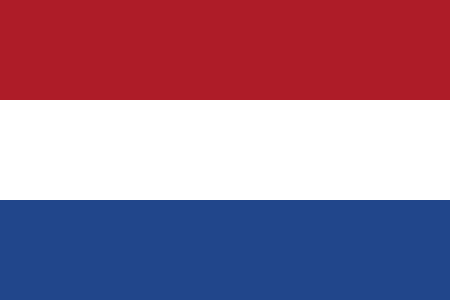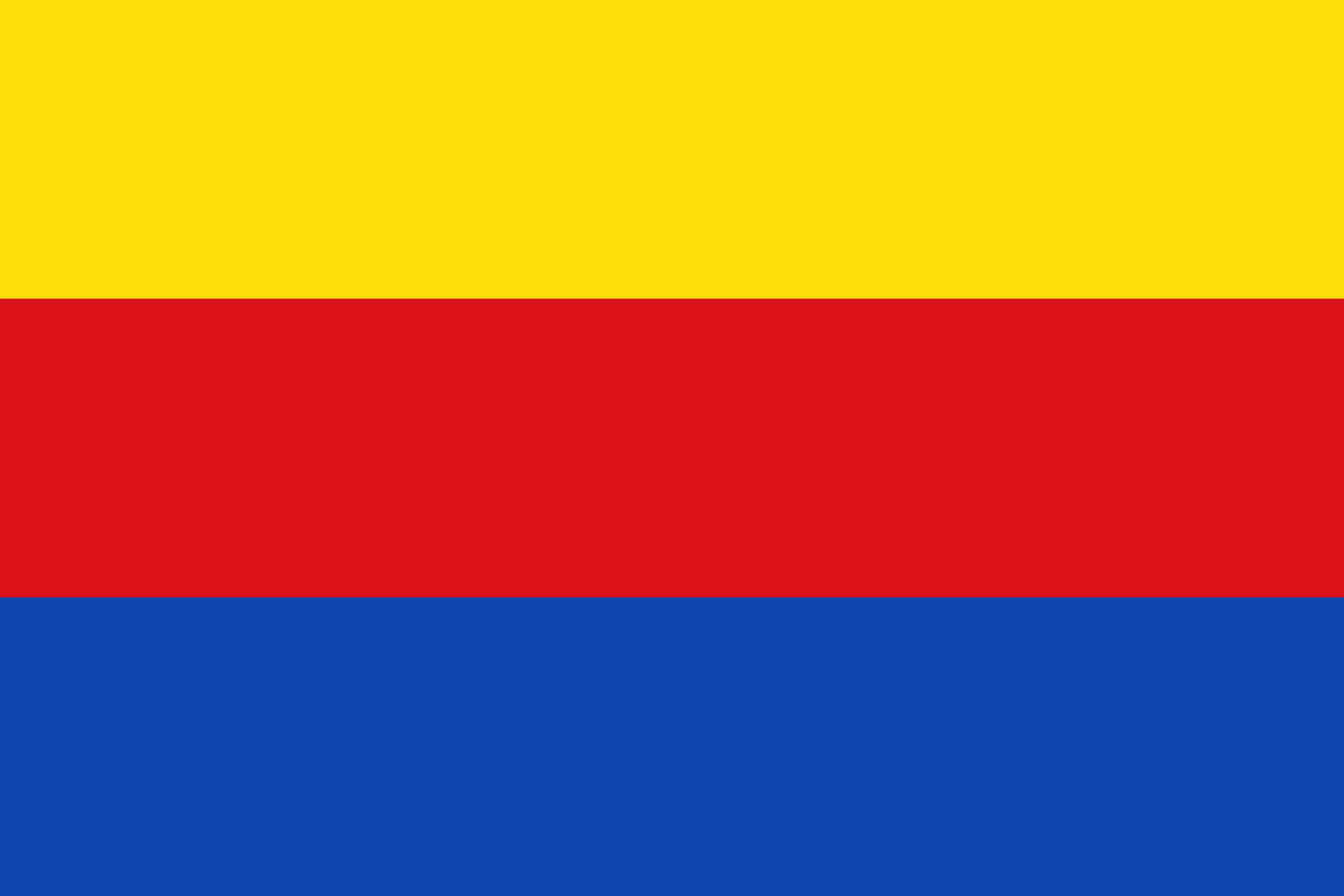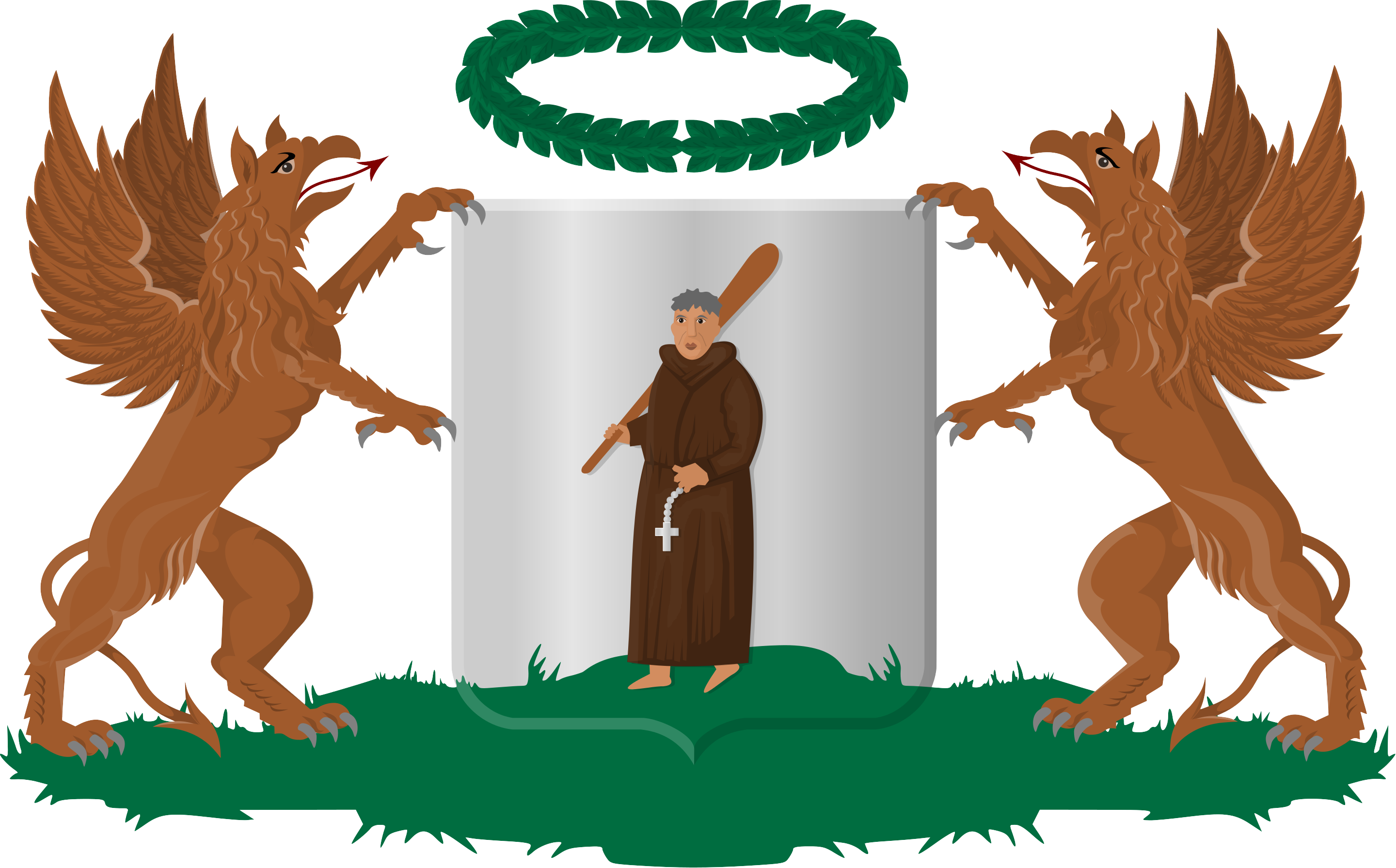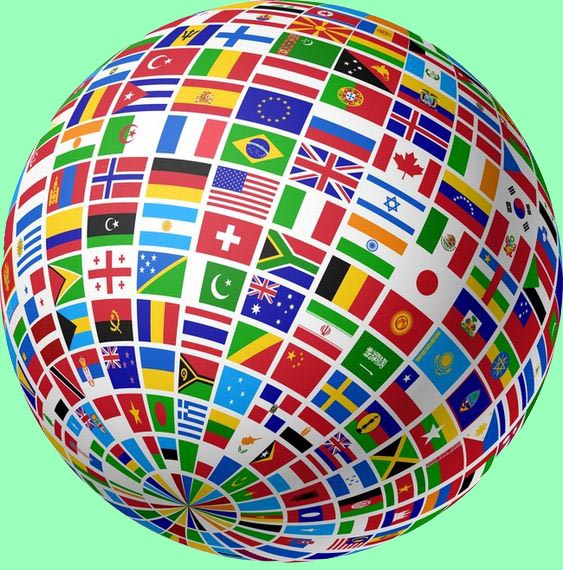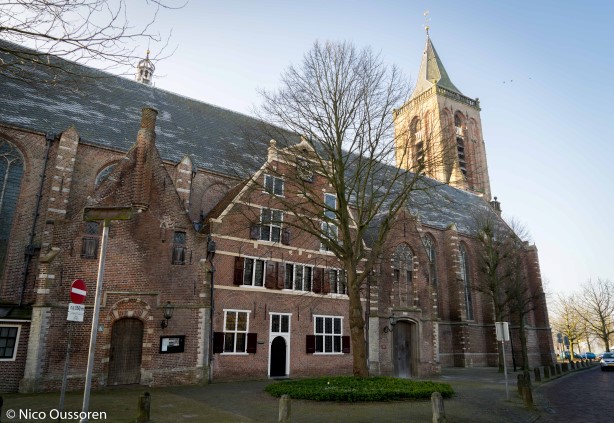The history of the Grote Kerk or St Nicholas church
The Grote Kerk or St Nicholas church was not the first church in Monnickendam. There was probably a small church as early as the 13th century and certainly by the year 1340. This church soon became too small for the rapidly growing population of Monnickendam and at the end of the 14th century work began on the construction of the Grote Kerk. For a long time worshippers had two churches to choose from. The first church probably closed its doors around 1470.
The construction of the Grote Kerk
The people chose a location on the edge of the town for the construction of the new – and at that time Catholic – Saint Nicholas church. The site offered plenty of room and was safely out of the way of the fires that occurred in the city. Saint Nicholas is the patron saint of skippers and sailors.
First they dug a pit of around three metres deep, after which poles of six metres were placed in the ground. The spaces between the poles were filled up with smaller poles of a couple of metres in length. A lattice work of beams was laid on top of these poles. When the bricks were laid, cow hides were used with the brick laying of the bottom layers to protect the mortar (trass) from the groundwater.
The construction of the Grote Kerk took at least 250 years; more or less spread over six phases. The first double-aisled church must have been completed in around 1412, as Pieter van Veen was appointed as the first priest in that year. Approximately every 50 years another part of the church was completed, ending up with the south-west corner 1644. The completed building was 70 metres long, 33 metres wide and 20 metres high.
The Grote Kerk is what is known as a triple-aisled church. The roofs of the three aisles are supported by the outer walls and 24 pillars. A remarkable feature of the church is the consistent Gothic building style, despite the fact that construction took 250 years and the Renaissance had already started in the sixteenth century. One exception to the Gothic building style was the Renaissance verger’s house, built in 1626. This was placed between the two entrance doors and was therefore apparently not really regarded as a part of the church.
Church tower
The construction of the tower was completed in three phases. The bottom part was completed in 1520. The reformation (1572) interrupted the process and the church became Protestant as a result of which the top of the tower (and the spire) were built in a more sober style. This is also the reason why the statues of the 12 apostles and Saint Nicholas never took their place on the corbels. The spire was placed on the top in 1641, making the tower 55 metres high. Initially both the church and the tower were the property of the city of Monnickendam. After the French invasion in 1795, a division was made between church and state. The Protestant community acquired the Grote Kerk, but the tower remained the property of the city of Monnickendam. The town council used the tower as a look-out post, but also, for example, for land surveys, military observation and the telegraph.
The Reformation
After Martin Luther posted his 95 theses on door of the All Saints' Church in Wittenberg on 31 October 1517, the reformation of the Roman Catholic faith began. A field sermon by Sebastiaan Matte in the Flemish Steenvoorde on 10 August 1566 resulted in an outbreak of iconoclasm in a nearby church, which rapidly spread over the North Netherlands. Monnickendam escaped this destruction. On 24 June 1572, the city switched its allegiance to William of Orange. This turnaround had a major impact on the Catholics. They lost their Saint Nicholas church to the Protestants, who changed the interior to reflect that of a Protestant church. The altar and statues were removed and the pulpit was placed in the middle of the church. It became forbidden to openly practice the Roman Catholic faith.
Major restoration 1959-1969
Although the tower in the church had been restored on a number of occasions in varying degrees, between 1959 and 1969 major restoration work took place. A report drawn up in 1955 indicates a desperate situation, both inside and outside. The churchwardens were desperate and even suggested to the Minister of Education, Arts and Sciences that ownership of the church should be transferred to the state, which did not happen.
As in earlier days, the poles which had been used were too short; the walls had subsided in some parts of the church and annexes by 40-50 cm. New foundations were made using 196 concrete piles of 18 metres in length which were placed on both sides of the walls and pillars. The building was so unstable that this had to be done using the so-called 'Waalpaal' system. In this system, the piles are not driven; a hollow pile is pushed into the ground in sections one on top of the other. Then these piles were filled with concrete. There were holes in the walls that were easily big enough to fit an arm in. The leadlight glass windows were in such poor condition that many windows had already been bricked up. The wooden roof construction had been badly damaged by mould and when it rained the congregation got wet. The floor of the church was dug down to a depth of more than half a metre. All the bones that were recovered were temporarily lodged near the sacristy. Once they were reburied the tombstone floor was restored to its current level. The spirelet and the sacristy were rebuilt. And an underfloor heating system was laid. The organ was restored and the organ casing was painted. The first estimate of the restoration costs was 1,000,000 guilders in 1958. That figure eventually increased to 4,438,199 guilders. On Wednesday 19 March 1969 the restored church was officially ready and three days later opened again to the public.
Restoration 2005-2011
The restoration of the outside of the church (roofs, gutters, windows and walls, joints and masonry) was started in 2005. This work was completed in mid-2007. In April 2007, the restoration of the interior started. Many volunteers helped to clear out the church. In this phase, this was a case of removing the existing plasterwork and then applying a special layer of plaster. Then the floor was restored. While the restoration was being carried out, additional work was taking place to make the building suitable as a venue for large events. Adjustments such as floor heating, a renewed lighting system, the replacement of the sound and vision system, decorating the exhibition area near the choir and repairing the chandeliers. The aim to reopen the church in the spring of 2008 proved to be unrealistic and, as a result of a number of setbacks, this had to be delayed considerably. The first church service was finally held on Sunday 11 October 2009. In May 2011, the restoration was rounded off with a celebration and the church was officially reopened by the Queen's Commissioner, Mr Remkes.
The Grote Kerk today
A church was not just built for prayer: it was and still is a public place. In the pre-reformation period a parish church was always open. It was a place for young and old to congregate. During the floods of 1825 and 1916 the church was a refuge for cows and horses. Children played there when the weather was bad, social contacts were established there and even trade was carried out. It formed part of daily life.
However, times have changed. The Grote Kerk is now open for the well-attended bi-weekly services of Monnickendam's Protestant community. The social contact is now reflected in the annual performance of the Saint John Passion, the many concerts, exhibitions, funerals, the annual farewell to Sinterklaas and many other social and official gatherings.
The Protestant municipality - owner of the Grote Kerk (the tower is owned by the civil municipality) - wants to use its church building to serve the inhabitants of Monnickendam and the surrounding area as much as possible. The Grote Kerk continues to be a focal point of the community, literally and figuratively, and so should it remain. The Grote Kerk does not just want to be regarded as the house of God, but also that of all the inhabitants in the vicinity of Monnickendam. This is why funds are required to maintain and look after it.
Book about the Grote Kerk
If you would like to read more about the Grote Kerk, Harry Voogel has written a book titled 'De Grote Kerk van Monnickendam' (only available in Dutch). It is can be purchased in the Grote Kerk, at the Nimo book shop in the Kerkstraat and in the Speeltoren museum on Noordeinde. It contains 150 photos. Price € 18.95. |
